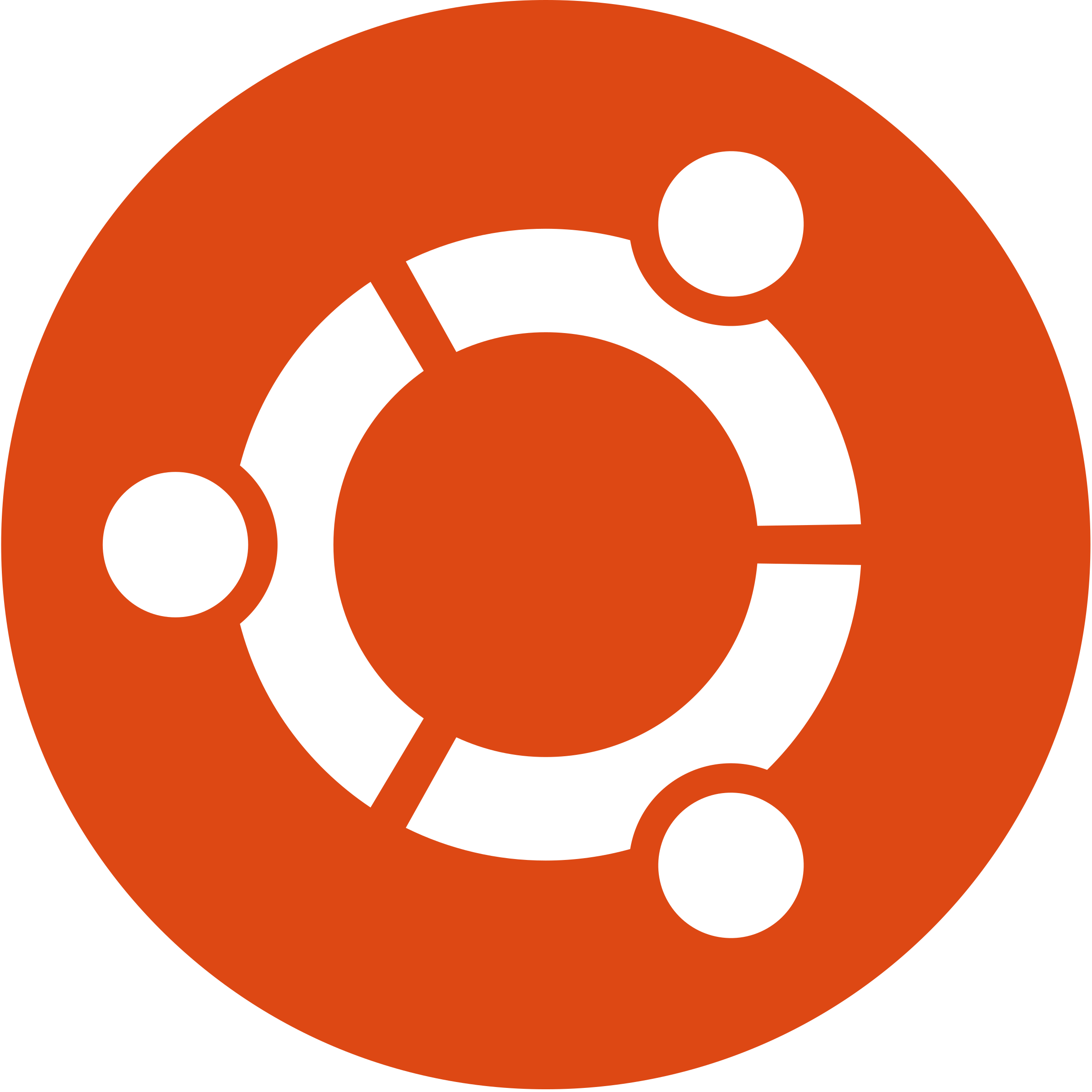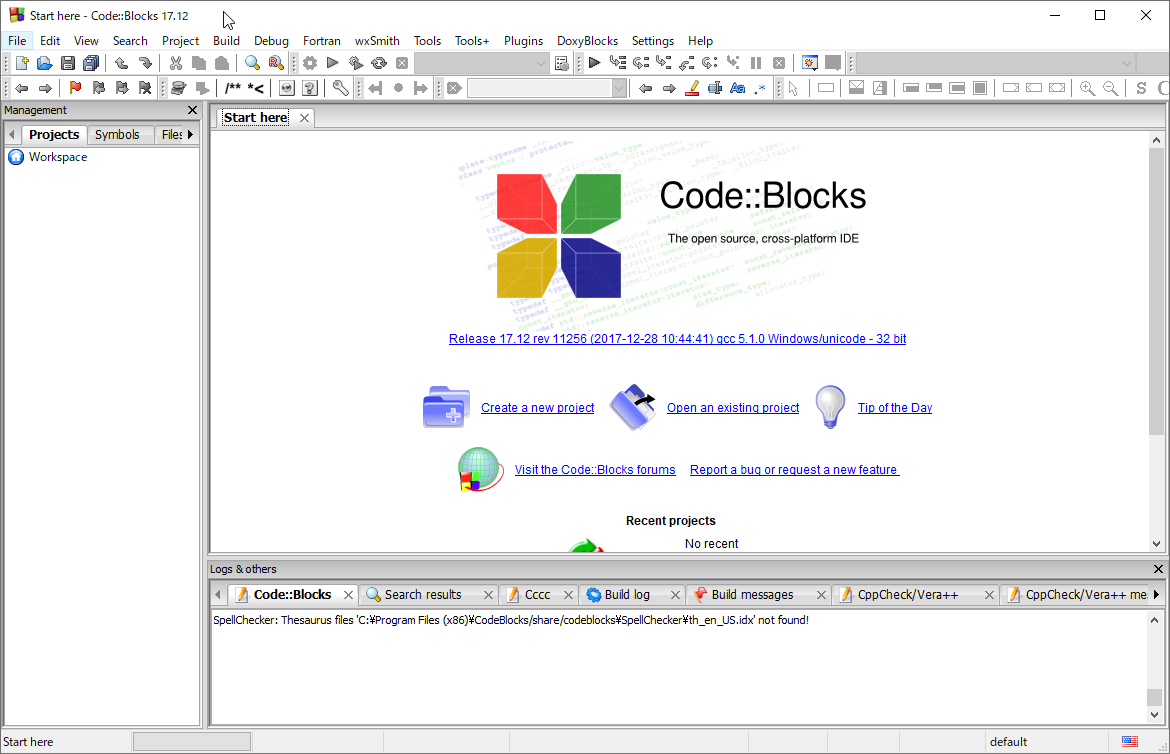Codeblocks Mac 2020
- We offer different flavours of the Mac version, explained hereby: - codeblocks-12.11-mac.dmg - Default release, in DMG (image) format - CodeBlocks-12.11-mac.zip - Same as above, but just zipped. CodeBlocks-12.11-SP1-mac.zip - On some systems we experienced stability issues with specific plugins. This release addresses these issues.
- I've been using both CodeBlocks and Xcode on Mac for a couple of years. Xcode is great for developing Mac applications. CodeBlocks is great if you need a cross-platform IDE. I'll outline the steps I used to get it working (fairly simple). Get CodeBlocks version 12.11.
- Start code blocks normally. Head on to the Settings drop-down menu and select Compiler. Then inside the settings window, navigate to the tab titled ‘Toolchain executables’. Under the field ‘Compiler’s installation directory’, ensure that the last folder in the selected path is MinGW.
Sudah baca Tutorial C dari awal, sampai saat install CodeBlocks kok OS Mac yg 20.03 sedang tidak bisa. Diarahkan ke versi sebelumnya 13.12, Mac saya tidak mau install. The developer of this app needs to update it to work with this version of macOS.
As a programmer, you’ve probably encountered some kind of an integrated development environment (IDE). Many IDEs work with multiple programming languages, while some are built for just one language, like C++.
In this article, we’ll look at the top IDEs for C++. But before we get started, let’s talk about what an IDE is in the first place.
What is an IDE and Why is it useful?
An IDE is a coding environment that includes both an editor and a language-specific toolchain. A typical IDE allows the user to edit source code and build executables; a good IDE has these set up in such a way as to make a developer more productive.
IDEs have built-in functions like debugging, auto-completion, compilation, and syntax highlighting, all of which make programming easier and faster.
It’s not only seasoned developers who benefit from IDEs — because they simplify the development toolchain and provide an appealing user interface, they make great learning environments for newer programmers as well. The best IDEs may vary for each language, so let’s look into the best C++ IDEs.
Top C++ IDEs
Eclipse
Eclipse is a popular open-source IDE that C++ programmers can use to develop applications using a special C++ plugin. Like most IDEs we’ll touch upon, this one is multiplatform, running on Windows, Linux, and Mac OS X. It will debug, compile, and auto-complete your code and automatically validates syntax. Eclipse also features a GUI with drag-and-drop functionality, remote project management, and ready-made code templates.

NetBeans
NetBeans is an open-source IDE for building applications with dynamic and static libraries in C++. Like Eclipse, it offers multiplatform support, fast code completion, and development tools on remote hosts to create, execute, and even debug projects from your client system.
The NetBeans IDE is particularly user-friendly, even beyond the normal auto-indentation, syntax highlighting, bracket matching, refactoring, and formatting that most IDEs offer. NetBeans implements features like code folding, templates, and a useful project window. It also comes integrated with the multi-session gdb debugger, useful for those who prefer it for debugging.
Visual Studio
Visual Studio is a full-featured C++ IDE that allows developers to build C++ and C# apps on Windows using a wide variety of tools. You can use the Microsoft Visual C++ compiler to build and debug your code in the IDE itself — in fact, its debugger can debug both source and machine code.
It has everything you’ll need to develop a project, including deployment tools, database integration, server setup, and more. Code completion is included, of course, but it’s not your normal IDE auto-completion tool — instead, it’s a powerful component called IntelliSense that uses language semantics and your own source code to offer suggestions.
Visual Studio is considered the ultimate IDE by many developers, but it comes at a cost, both figuratively and literally. To run Visual Studio you’ll need a powerful Windows development machine, and if you intend to build commercial C++ applications, you’ll need to purchase a Visual Studio license.
Visual Studio Code
While Visual Studio Code (often called VS Code, not to be confused with Visual Studio) is not formally a C++ IDE, it is perhaps the most well-known open-source code editor for a wide variety of languages, and it can act as an IDE with the right extensions. This developer-environment tool also offers multiplatform support and is excellent for developers seeking customization and a high degree of flexibility.
Instead of a project orientation, VS Code is organized around a file system, and it lacks scaffolding support. But what it lacks in those areas it makes up for with other features such as a built-in command-line interface and git integration that allows for pulling, committing, and publishing using a simple GUI.
It also boasts a rich API for debugging tools and has smart code completion, code refactoring and snippets. It supports numerous extensions that bring in new functionality such as other languages and new themes. You can manage multiple versions of a program with ease.
CodeBlocks
CodeBlocks is an open-source C++ IDE that, as one might expect, also supports compiling, debugging, code coverage, profiling and auto-completion of code. Like Eclipse, its GUI lets you arrange elements by simply dragging and dropping.
It works on Windows, Linux and Mac OS. The IDE can handle object-oriented programming as well as code analysis. Its tabbed interface allows you to switch between multiple projects with ease; last but not least, you can employ full breakpoint conditions, which means you can stop the execution of code if a condition is met.

CLion
Created by Jetbrains, CLion (pronounced sea-lion) is a cross-platform C++ IDE that supports macOS, Linux, and Windows integrated with the CMake build system. CLion offers much in the way of user-friendliness: testing individual units of source code, running and debugging code with ease, customizations, project management, code analysis, and auto-formatting are just a few of its features that make coding easy and fast. This IDE also lets you analyze the performance of your application.
Qt Creator

Qt Creator is a powerful C++ IDE, but it offers just a one-month free trial. Not only does it support all major OS platforms, it’s truly cross-platform: it lets developers on different operating systems share projects using a single development tool. It offers debugging, compiling, profiling, auto-completion of code and refactoring. It also supports static code analysis, has one of the best GUI designers based on the Qt framework, and is exceptionally fast.
Xcode
Xcode is a C++, Objective-C, and Swift IDE for Mac OS. It contains most, if not all, of the features the other IDEs offer, and it can also integrate with Apple’s online developer services like iTunes Connect. This means that developers can publish their apps on the App Store and can use Apple services such as iCloud in the apps they’ve designed.
Dangers of Using a C++ IDE
Perhaps the biggest danger in using any IDE is failing to understand the toolchain, the set of tools used in sequence to compile and run source code. Here’s a brief overview of the C++ toolchain to avoid confusion when using an IDE.
When your C++ source code is ready to be compiled, it is run through a compiler. The compiler then hands off a file to the CPU with instructions for the CPU to execute. When the CPU runs our file, only then does our program run. In addition to the compiler, you also need the C++ standard library, the assembler, and the linker. The standard library is what gives the CPU instructions it can understand; the assembler converts the output of the compiler into binary instructions for the CPU; and the linker allows the standard library and the assembler to form the final executable.
Complicated, isn’t it? Because IDEs are fully outfitted to assist you in developing and running your entire program, failure to understand what you need to do at each point in your project development can result in confusion and may end up fouling up your project. If you’re still on the path to understanding the C++ toolchain fully, below we offer you some alternatives to jumping into an IDE right away.
IDE Alternative: Text Editor and Command Line
If you prefer something lighter than a C++ IDE, text editors and command-line interfaces offer an alternative for developing C++. The tools are often oriented around files and don’t provide the functionality to support across-the-board management of a project. Instead, they are used primarily for simply editing code. Let’s go over some of the most popular ones.
Latest Code Blocks For Mac
Vim
Both Linux and Mac OS come already equipped with the Vim editor. Typically, Vim runs inside your terminal window; if you’d like to run it as a standalone program, you can download MacVim for Mac OS, or gVim for Linux. With the right extensions, Vim can, in fact, become a full-fledged IDE, so it’s a great option for beginners who want to stick with one editor on their journey toward expert status. Like an IDE, Vim has tabs that let you work with several files simultaneously. One of Vim’s best features Vim is an interactive command-line tutorial called vimtutor. To run it, simply type vimtutor in your terminal. Admittedly, learning Vim shortcuts can take a while, but in the long run, the efficiency you gain in editing code is worth it.
Sublime Text
Code Blocks Mac 2020 Download
Sublime Text is a commercial cross-platform source code editor best known for its speed and efficiency. Besides its incredible performance on even very large files and its convenient editing, as customization goes it’s right up there with VS Code. Sublime Text can also auto-generate a project-wide index of every function, method, and class within your source code. Its downside is that while it does offer a free trial that doesn’t expire, as a proprietary editor it does require you to buy a license to continue using it.
Emacs
The Emacs editor is available for Linux, Windows, and Mac OS. Like Vim, Emacs offers numerous extensions that can make the editor into a complete C++ IDE. Although Vim is undeniably faster than Emacs, Emacs is easier to learn, and new users will likely become conversant with it faster than a newcomer would with Vim.
Conclusion
In this article, we looked at some of the popular and well-performing IDEs for C++. Most of them have features like code completion, syntax highlighting, debugging and refactoring, but programmers looking to develop an application on a certain platform will prefer one over the others. We also discussed the potential dangers of using an IDE — namely, not understanding the toolchain — and went over some highly customizable text editors as alternatives to full-fledged IDEs.
Getting started with any of these IDEs or text editors is a great strategy if you want to develop your C++ skills. As you get your feet wet with C++ IDEs, we recommend simultaneously learning the language itself from a reputable source so you can make the most of your project development. If you’re interested in further learning C++, check out the C++ Nanodegree program.

